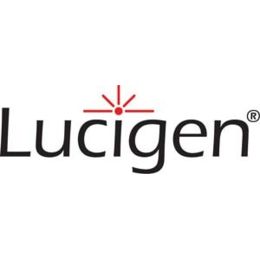
Random insertion of R6K origin for rescue of flanking DNA or plasmids
- Insert R6K origin randomly into any DNA sequence in vitro
- Skip primer walking – simplify Sanger sequencing of large DNA inserts
- Rescue clones in E. coli host expressing the pir gene product
- Minimize insertion bias with the hyperactive Tn5 system, known for highest level of randomness
| Name | SKU | Size | Availability | Vendor | Price | Order | |
| EZ-Tn5™ |
EZI011RK | 10 Rxns | Generally 1-2 weeks from receipt of order | LGC Biosearch Technologies - Lucigen (Epicentre) | Log in for pricing |
Applications
- “Rescue” of plasmids or any other circularized DNA (e.g., mitochondrial DNA) that would not otherwise replicate in E. coli because they lack a recognizable origin of replication and/or a selectable marker.
- Preparation of DNA sequencing templates from transposon insertion clones without primer walking or additional subcloning.
- Creation of a library of random gene knockouts in vitro to facilitate genetic analysis of plasmid-encoded genes.
The EZ-Tn5™ <R6Kγori/KAN-2> Insertion Kit* facilitates the sequencing and genetic analysis of plasmids or any other circularized DNA that would not otherwise replicate in E. coli.1,2 The kit is based upon the EZ-Tn5™ <R6Kγori/KAN-2> Transposon which carries the E. coli R6Kγ conditional origin of replication (R6Kγori) and a kanamycin resistance marker. A simple, one-step, 2-hour in vitro reaction randomly inserts the transposon into the target DNA. Then an aliquot of the reaction is used to transform an E. coli host expressing the pir gene product, which is required for replication from the R6Kγori. Insertion clones are selected on kanamycin plates and can be sequenced bidirectionally using the provided primers that are homologous to the ends of the transposon. Clones can be maintained in Epicentre’s TransforMax™ EC100D™ pir+ or TransforMax™ EC100D™ pir-116 strains.3
 |
Figure 1. A plasmid containing the EZ-Tn5™ <R6Kγori/KAN-2> Transposon can be maintained in TransforMax™ EC100D™ pir+ cells at ~15 copies per cell (Lanes 1-4) or TransforMax™ EC100D™ pir-116 cells at ~250 copies per cell (Lanes 5-8). Colonies from randomly chosen clones were processed using the Colony Fast-Screen™ Kit. A 5-microliter aliquot of lysate was loaded per lane. M, supercoiled DNA ladder. |
References
- Jendrisak, J. et al. (2002) Epicentre Forum 9(1), 14.
- Yoon, Y. and Koob, M. (2003) Epicentre Forum 10(2), 10.
- Metcalf, W.W. et al. (1994) Gene 138, 1.
